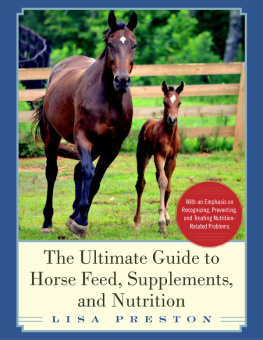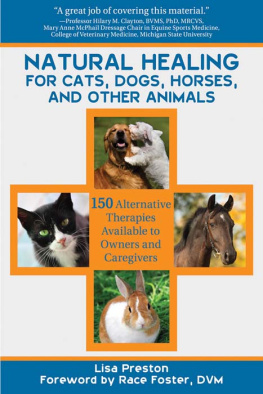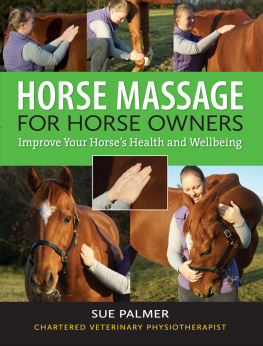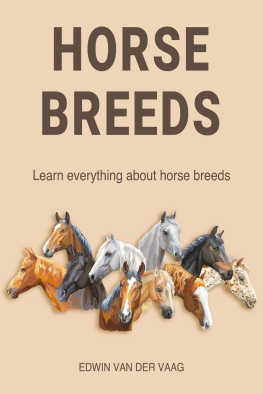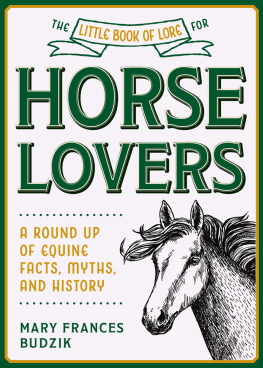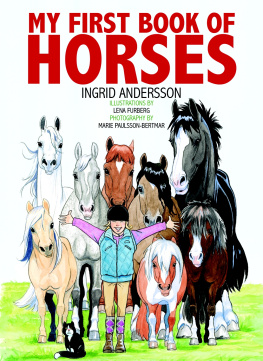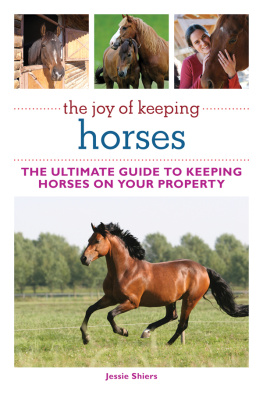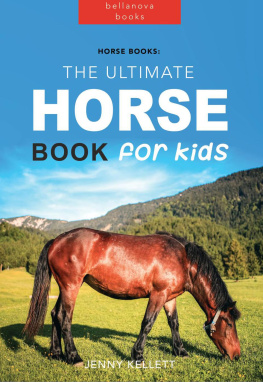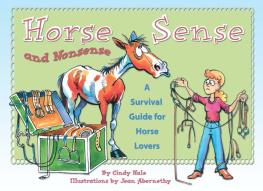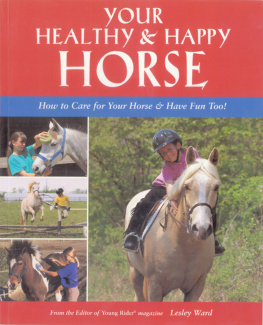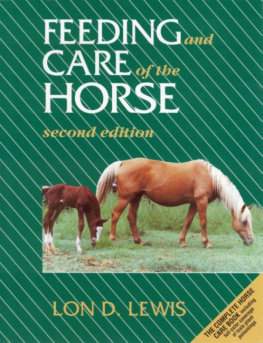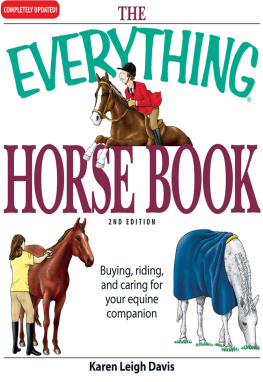Copyright 2016 by Lisa Preston
All rights reserved. No part of this book may be reproduced in any manner without the express, written consent of the publisher, except in the case of brief excerpts in critical reviews or articles. All inquiries should be addressed to Skyhorse Publishing, 307 West 36th Street, 11th Floor, New York, NY 10018.
Skyhorse Publishing books may be purchased in bulk at special discounts for sales promotion, corporate gifts, fund-raising, or educational purposes. Special editions can also be created to specifications. For details, contact the Special Sales Department, Skyhorse Publishing, 307 West 36th Street, 11th Floor, New York, NY 10018 or .
Skyhorse and Skyhorse Publishing are registered trademarks of Skyhorse Publishing, Inc., a Delaware corporation.
Visit our website at www.skyhorsepublishing.com.
10 9 8 7 6 5 4 3 2 1
Library of Congress Cataloging-in-Publication Data is available on file.
Cover design by Tom Lau
Cover photo credit Aly Rattazzi
Print ISBN: 978-1-5107-0535-7
Ebook ISBN: 978-1-5107-0536-4
Printed in China
Table of Contents
1 Introduction: How to Skip the Math and Source with Science
The Ultimate Chart: Feeding Formulas Solved
4 The Food: Forages and Non-Forage Supplementary Feeds
Forage: Safe Pastures, Hay, and Other Roughages
Non-Forage Supplementary Feed: Grain, By-Products, Oil, and Proprietary Feeds, and Treats
9 Special Diets: Athletes, Broodmares, Growing Youngsters, Senior Horses, Draft Horses, Ponies and Miniature Horses, Donkeys and Mules, Recovery from Neglect, Overweight Horses, and Medical Problems with Nutritional Implications
Expanded Table of Contents
1 Introduction: How to Skip the Math and Source with Science
The Ultimate Chart: Feeding Formulas Solved
Critical Thinking: Avoid Errors, Bust Myths, and Get Metric
4 The Food: Forages and Non-Forage Supplementary Feeds
Forage: Safe Pasture, Hay, and Other Roughages
A Bit of Botany: How Essential Carbohydrates Become Dangerous
Pasture Management and Safe Grazing
Hay: Selection, Storage, Serving, and Soaking
Other Roughages: Silage, Haylage, Chop, Cubes, Pellets, and Sprouts
Non-Forage Supplementary Feed
Grain: The Common Concentrate
By-Products: Brans, Pulps, Hulls, and Meals
Oils: Fatty Acids from Alpha to Omega
Proprietary Blends
Complete and Sweet Feeds
Probiotics and Prebiotics
Balancers: Vitamins, Minerals, and Electrolytes
Homemade Electrolyte Recipes
Synchronous Diaphragmatic Flutter
Treats: Always, Sometimes, and Never, Plus Recipes
9 Special Diets Part 1: Life Situations
Athletes
Ergogenic Supplements
Three Days at a Time
Broodmares
Zikoma is Coming
Growing Youngsters
One Quarter Horses First Two Years
Seniors
Arthritis and Joint Supplements
The 31-Year-Old Dressage Horse
Draft Horses
Pulling on the Island
Ponies and Miniature Horses
The Guide Horse and the Riding Pony that Believes Hes a Horse
Donkeys and Mules
Hugo, the Mule Selected as the Best-Conditioned Horse
Neglect and Starvation
Rescue Success on a Pedestal
Overweight Horses
A Missouri Foxtrotter Slims Down
Special Diets Part 2: Medical Problems with Nutritional Implications
Equine Metabolic Syndrome
Hepatic Impairment or Disease
Hyperkalemic Periodic Paralysis (HYPP)
Insulin Resistance
Neuromuscular Disorders: EMND, Shivers, and Stringhalt
Pituitary Pars Intermedia Dysfunction (PPID)
Renal Impairment or Disease
Respiratory Disorders: IAD, RAO, and SPAOPD
Rhabdomyolysis and Polysaccharide Storage Myopathy (PSSM)
Ulcers: EGUS, EGUD, and RDC
List of Tables
Table 41 Common Forage Grasses and Legumes
Table 42 The Impact of a High-Grain Diet Versus Best Practice
Table 43 The Sweat Scoring System
Table 44 The Comfort Index
Table 45 Recipe Matrix for Baked Horse Cookies
Table 91 Equating Pulse to Energy Demand
Table 92 A Broodmares Monthly Increase in Energy Requirements
Table 93 The AAEP Lameness Scale
Table 94 Weight Estimation for Ponies and Miniature Horses
Table 95 Key Nutritional Differences Between Donkeys and Horses
Table 96 Intercontinental Study by the Donkey Sanctuary
Table 97 The Cresty Neck Score
Table 98 Equine Ulcers: Risk Factors and Prevention
Foreword
It is important to know where one should and should not spend resources in horse ownership. One of my mentors told me that a veterinarian's most important job is to shepherd a client's time and money. Owners need to be part of that process as well. That capability only comes with factual knowledge and insight. This book helps you get there. Lisa Prestons book is an excellent referenced resource of information relevant for horse owners, and all the shareholders in the horse industry. While reading, I was more than excited by the intense review of topics, as well as the practical and easy to read language of the work. There are always questions, but this book gets you to what we know and what we don't know. Every section is well written and concise. I read it cover to cover and learned a great deal. Ultimately, Prestons work will go in my references for students, and further it should be on the reference shelf of every horse person.
Joseph J. Bertone, DVM, MS, DACVIM
Professor Equine Medicine, College of Veterinary Medicine
Western University of Health Sciences
Foreword
The Ultimate Guide to Horse Feed, Supplements, and Nutrition is for horse owners, horse managers, and students of equine science who wish to learn and expand their knowledge and to challenge the old myths and traditions they may have grown up with. Lisa Preston gently guides her reader through the equine science and brings up to date understanding into a world where things are often done just because they were always done that way.
The tie between nutrition and the horses health and welfare is undeniable: linking how horses have evolved into a roaming herbivore, able to survive the harshest winter or desert conditions on minimal quality forage, to the rich environment we keep them in today. Often this environment leads to obesity and related disorders, indeed not unlike those in humans. In addition, we exercise our horses and demand athletic performance while trying to balance their natural, species-specific needs (very low quality herbage, foraging up to fourteen hours per day) with our own lifestyle demands. It is inevitable that sometimes conflict arises between these demands and the health and welfare of the animal, but thanks to a plethora of research over the past twenty years, our understanding of how to prevent and treat nutrition-related problems has advanced considerably.
The Ultimate Guide to Horse Feed, Supplements, and Nutrition has been carefully constructed to give practical advice based on the latest knowledge and is clearly built on systematic, in-depth research. It translates the science into every day, applied situationsfrom nutrition for work, for breeding-stock, feeding before exercise, dealing with stomach ulcers, to prevention of laminitis and colic. Even feeding of donkeys, mules, draught horses, and miniature horses is discussed.
This book is a perfect learning and reference resource which anyone working with horses should have on their shelves and at hand in the barn, with the pull-out chart hanging up in their tack room or office.

